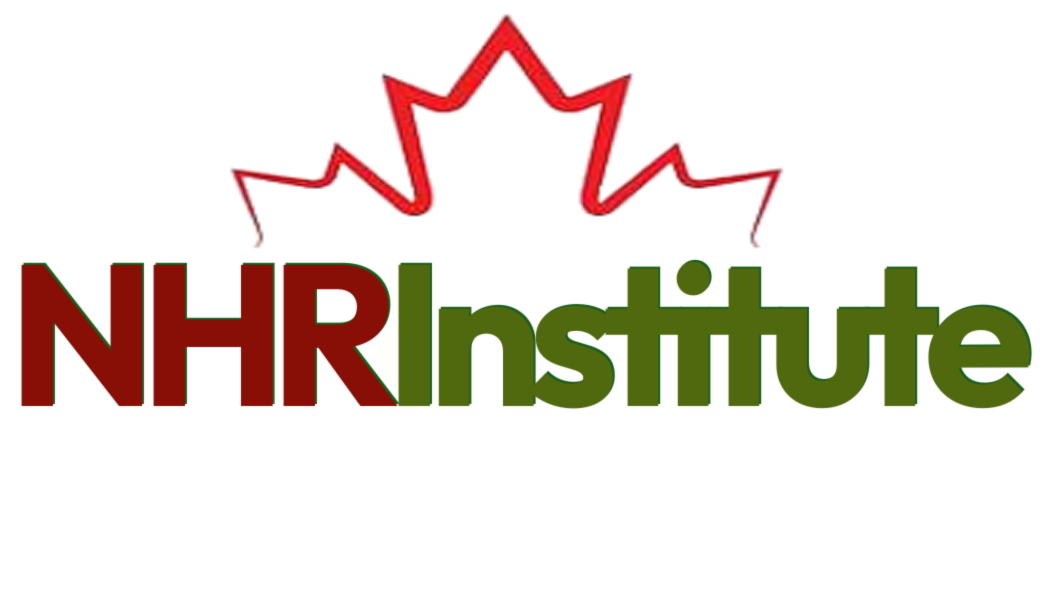Health and Healthcare
The Fundamental Questions
Some views agree that in general people are healthier than they used to be for the following reasons:
1. Longer Life Expectancy: Average global life expectancy has increased significantly due to advancements in medicine, sanitation, and nutrition.
2. Medical Advancements: Modern medicine has eradicated or controlled many deadly diseases (e.g., smallpox, polio) and provides effective treatment for chronic conditions.
3. Better Nutrition: Greater access to a variety of nutritious foods and supplements supports healthier development and aging.
4. Public Health Improvements: Vaccinations, clean water, better hygiene, and health education have reduced disease and mortality.
5. Technology and Monitoring: Wearables and health apps allow individuals to monitor and manage their health in real time.
—
Others disagree that people are not healthier than they used to be for the following reasons:
1. Rise in Chronic Diseases: Rates of obesity, diabetes, cardiovascular disease, and mental health disorders have risen dramatically, particularly in developed nations.
2. Lifestyle Issues: Sedentary lifestyles, poor diet choices, and screen overuse are contributing to new health challenges.
3. Environmental Toxins: Increased exposure to pollution, chemicals, and microplastics may pose long-term health risks.
4. Mental Health Crisis: Depression, anxiety, and stress-related illnesses are more prevalent today than in many past societies.
5. Over-Medicalization: Dependence on pharmaceuticals and overtreatment can sometimes worsen rather than improve overall well-being.
Higher life expectancy is a result of multiple health factors, improvements in medical care, and societal advancements that have collectively contributed to people living longer, healthier lives. Some key health factors that have contributed to the increase in life expectancy include:
1. Advancements in Medical Care and Technology
* Immunizations and Vaccines: Widespread vaccination programs have dramatically reduced deaths from infectious diseases such as smallpox, polio, and measles. Vaccines have helped prevent pandemics and have contributed to overall reductions in mortality, especially among children.
* Improved Medical Treatments: Advances in treatments for chronic diseases, such as heart disease, cancer, and diabetes, have significantly improved life expectancy. Innovations in surgery, cancer therapies, and medications (e.g., statins, insulin pumps, and targeted cancer treatments) have allowed people to manage and survive conditions that once led to early death.
* Better Diagnostic Tools: Improvements in diagnostic technologies (e.g., MRI, CT scans, and genetic testing) have allowed for earlier detection of diseases, enabling more effective and timely treatment, leading to better health outcomes and longer life.
2. Better Public Health and Sanitation
* Access to Clean Water and Sanitation: One of the most significant contributors to increased life expectancy has been the widespread availability of clean drinking water and improved sanitation. Reducing exposure to waterborne diseases like cholera, dysentery, and typhoid has significantly lowered mortality rates.
* Waste Management: Proper waste disposal systems and sewage treatment have reduced the spread of infectious diseases, leading to healthier environments and longer lives.
3. Nutrition and Food Security
* Improved Nutrition: Access to a more diverse and balanced diet has led to fewer nutrient deficiencies and malnutrition-related diseases. Advances in food production, agriculture, and distribution have helped ensure that more people have access to the necessary nutrients for maintaining good health.
* Reduced Hunger and Malnutrition: Efforts to combat hunger and undernutrition, particularly in developing countries, have improved health outcomes and reduced mortality, especially in children. Programs aimed at improving maternal and child nutrition have contributed to healthier populations and longer life expectancy.
4. Control of Infectious Diseases
* Antibiotics and Antivirals: The discovery and widespread use of antibiotics (such as penicillin) and antivirals (like antiretroviral drugs for HIV/AIDS) have played a major role in controlling infectious diseases that once led to high mortality rates. Conditions like pneumonia, tuberculosis, and bacterial infections are now treatable, significantly extending life expectancy.
* Public Health Campaigns: Global initiatives like the eradication of smallpox and the reduction of malaria through bed nets and antimalarial drugs have led to reductions in deaths from infectious diseases.
5. Health Education and Awareness
* Tobacco Control: Efforts to reduce smoking through public health campaigns, restrictions on tobacco advertising, smoking bans, and the promotion of smoking cessation programs have contributed to lower rates of lung cancer, heart disease, and respiratory illnesses.
* Health Education: Public health campaigns promoting healthy lifestyle choices, such as regular exercise, healthy eating, and safe driving, have helped reduce the incidence of preventable diseases such as heart disease, obesity, and diabetes. Awareness of the risks of alcohol consumption and unhealthy diets has also contributed to healthier populations.
6. Advancements in Maternal and Child Health
* Maternal Care: Access to quality prenatal and postnatal care has reduced maternal and infant mortality rates. Advances in obstetrics and gynecology, as well as access to better nutrition and health services during pregnancy, have led to safer childbirths and healthier mothers and babies.
* Infant Health: Improvements in neonatal care, vaccinations, and the prevention of birth defects have significantly reduced infant mortality, which has a direct effect on life expectancy rates.
7. Healthier Lifestyle Choices
* Exercise and Physical Activity: Regular physical activity has become more recognized for its role in preventing chronic conditions such as cardiovascular disease, diabetes, and obesity. As more people engage in physical activity through sports, exercise programs, or daily movement, overall health has improved, contributing to longer lives.
* Mental Health Awareness: As societies have increasingly recognized the importance of mental health, interventions for mental health conditions (such as depression, anxiety, and stress management) have improved. The reduction of chronic stress, in particular, has been linked to better physical health outcomes and longer life.
8. Health Care Access and Equity
* Universal Health Coverage: Access to affordable health care has been a significant factor in improving life expectancy. In countries with universal health care, people are more likely to receive preventive care, early treatment, and necessary medical interventions, leading to better health outcomes and longer life expectancy.
* Health Equity: Efforts to reduce health disparities among different populations (based on socioeconomic status, race, or geography) have contributed to improvements in life expectancy. Access to health services, education, and resources has improved across various demographic groups, helping to ensure that more people live longer, healthier lives.
9. Environmental Factors
* Cleaner Air and Environmental Regulations: Improved air quality due to stricter environmental regulations has led to reductions in respiratory diseases such as asthma and chronic obstructive pulmonary disease (COPD). Limiting exposure to pollutants, toxins, and chemicals has contributed to better overall health and longevity.
* Safe Housing and Urban Development: Improved housing conditions, including better insulation, safer building materials, and access to green spaces, have led to healthier living environments, contributing to longer life expectancy.
10. Aging Population and Health Management
* Geriatric Care and Aging Populations: As life expectancy increases, the growing focus on geriatric care and the management of age-related health conditions (e.g., dementia, osteoporosis, heart disease) has played a crucial role in supporting older adults. Advances in age-related health care, such as better management of chronic conditions, mobility aids, and long-term care services, help older individuals live longer, more fulfilling lives.
* Longevity Research: Ongoing research into aging and longevity, including studies on telomeres, stem cells, and regenerative medicine, promises to further extend life expectancy in the future. Medical advances in aging may help individuals live healthier for longer periods of time.
11. Increased Global Collaboration
* International Health Initiatives: Global health organizations like the World Health Organization (WHO) and other international bodies have coordinated efforts to combat disease, promote health, and improve health systems in low-income countries. These initiatives have been crucial in raising life expectancy worldwide, particularly in developing countries.
Increased life expectancy is the result of a combination of factors, including advances in medical technology, public health initiatives, better nutrition, and improved healthcare systems. The decline in mortality from infectious diseases, coupled with improvements in chronic disease management and a better understanding of lifestyle and environmental factors, have all contributed to people living longer, healthier lives. As we continue to advance in these areas, life expectancy is expected to rise even further, although challenges remain in addressing health disparities and promoting equitable access to healthcare globally.
Modern medical advancements have significantly improved global health, enabling better treatment, prevention, and management of diseases. However, while these advancements have undoubtedly enhanced health outcomes for many, they also come with certain challenges and considerations that affect their overall “healthiness.” Here’s a balanced look at both the positive and potentially negative aspects of modern medical advancements:
Positive Impacts of Modern Medical Advancements:
- Improved Disease Prevention and Management
- Vaccines: Vaccines have been one of the most successful medical advancements, eradicating or controlling diseases like smallpox, polio, and measles, preventing millions of deaths. Immunization programs continue to protect against infectious diseases and prevent their spread, contributing to longer, healthier lives.
- Early Diagnosis: Technologies such as MRI, CT scans, and genetic testing allow for earlier detection of diseases like cancer, diabetes, and heart disease, often leading to more effective treatments and better outcomes.
- Chronic Disease Management: Modern medications and treatments help individuals manage chronic conditions like diabetes, hypertension, asthma, and heart disease. These advancements allow people to live longer with conditions that would have been fatal in the past.
- Life-Saving Treatments and Surgery
- Advanced Surgical Techniques: Minimally invasive surgeries (e.g., laparoscopy, robotic surgery) have reduced recovery times, minimized pain, and decreased the risk of complications. These techniques have revolutionized fields such as oncology, orthopedics, and cardiology.
- Organ Transplants: The development of organ transplantation techniques has saved countless lives. Transplants of kidneys, livers, hearts, and lungs have given patients the chance to live longer, healthier lives.
- Personalized Medicine: Advances in genetics and genomics have led to the development of personalized medicine, where treatments can be tailored to an individual’s genetic makeup. This has improved the effectiveness of treatments for conditions like cancer, cystic fibrosis, and rare genetic disorders.
- Mental Health Advances
- Psychiatric Treatments: Advances in psychiatry, including new medications, therapies (such as cognitive-behavioral therapy), and understanding of mental health disorders, have allowed millions to manage conditions like depression, anxiety, and schizophrenia, improving quality of life.
- Increased Awareness: Greater recognition and understanding of mental health issues, along with improved access to mental health care, have helped reduce the stigma surrounding mental illness and have led to better outcomes for many individuals.
- Preventive Medicine and Public Health Initiatives
- Health Screening: Routine screenings (e.g., mammograms, colonoscopies, cholesterol tests) help detect diseases early, improving survival rates and allowing for less invasive treatments.
- Health Campaigns: Modern public health initiatives, such as anti-smoking campaigns, efforts to reduce obesity, and promotion of exercise and healthy eating, have contributed to a decline in preventable diseases and improved public health.
- Technological Advancements
- Telemedicine: The growth of telemedicine and digital health tools has made healthcare more accessible, especially in rural or underserved areas. Remote consultations and digital health monitoring help patients receive timely care and manage conditions without the need for in-person visits.
- Artificial Intelligence (AI) and Robotics: AI and robotic surgery are transforming diagnostics, treatment plans, and surgery. These technologies help doctors make more accurate diagnoses, enhance surgical precision, and reduce human error.
Potential Challenges and Concerns:
- Over-Reliance on Medication
- Side Effects and Dependencies: While medications have revolutionized treatment, some modern drugs can have significant side effects or lead to dependencies. For example, the over-prescription of opioids in the past has contributed to the global opioid crisis, with many people developing addictions.
- Polypharmacy: Older adults, in particular, may be prescribed multiple medications, which can lead to drug interactions, side effects, and a decrease in overall health if not properly managed
- Inequities in Healthcare Access
- Healthcare Disparities: Despite the availability of advanced medical technologies, access to these innovations is not universal. People in low-income or rural areas, and in developing countries, may not have access to life-saving treatments or modern healthcare services, leading to inequities in health outcomes.
- Cost of Treatments: Cutting-edge medical treatments and technologies can be very expensive, making them inaccessible to many individuals, particularly in systems where healthcare is privatized or not universally accessible.
- Ethical Concerns
- Gene Editing: Technologies like CRISPR, which allow for the editing of genes, hold great potential for treating genetic disorders. However, these technologies also raise ethical questions about “designer babies,” genetic modification, and the potential for unintended consequences.
- Privacy Concerns: With the rise of digital health records and telemedicine, concerns about data security and patient privacy have emerged. There’s a risk of health data being misused, stolen, or inadequately protected.
- Antibiotic Resistance
- Overuse of Antibiotics: The over-prescription of antibiotics, particularly for viral infections, has led to the rise of antibiotic-resistant bacteria. This could threaten the effectiveness of many life-saving antibiotics, making previously treatable infections harder to manage and potentially leading to higher mortality rates from infections.
- Lifestyle-Related Health Issues
- Sedentary Lifestyles: Advances in technology, while beneficial in many ways, have also contributed to more sedentary lifestyles. The rise of screen time, automation, and desk jobs has led to an increase in conditions like obesity, heart disease, and diabetes, even as life expectancy increases.
- Mental Health Impacts of Technology: The constant use of digital technologies can have negative effects on mental health, including stress, anxiety, and disrupted sleep patterns. The rise of social media has also been linked to issues like depression and loneliness.
- Environmental and Ethical Issues in Medicine
- Environmental Impact of Healthcare: The medical field, especially pharmaceutical production, contributes to environmental pollution. The production of medical waste, plastics, and pharmaceuticals can have negative ecological consequences. Efforts to make healthcare more sustainable are growing but still need attention.
- Animal Testing: Some modern medical advancements, particularly in drug development, still rely on animal testing, raising ethical concerns about the treatment of animals and the necessity of such practices.
Modern medical advancements have undoubtedly had a positive impact on public health, significantly increasing life expectancy and improving the quality of life for many. Advances in vaccines, treatments for chronic conditions, surgical techniques, and mental health care are just a few examples of how medical progress has improved health outcomes globally.
However, there are challenges that need to be addressed, including healthcare access disparities, the ethical implications of new technologies, and the unintended consequences of over-reliance on medications or environmental impacts. Ultimately, while modern medicine is overwhelmingly beneficial, it’s crucial to continue evaluating and improving these advancements to ensure they remain healthy and accessible for all.
Essays related to Health and Healthcare
- Cause – Effect Essay: Nowadays, a growing number of people with health problems are trying alternative medicines and treatments instead of visiting their usual doctor. Do you think this is a positive or a negative development?
- Problem – Solution Essay: Nowadays, workers are having difficulties maintaining a balanced work-life balance . For what reasons are they having difficulties? And how could they maintain a more balanced lifestyle?
- Agree – Disagree Essay: Fast-foods or junk foods are extremely unhealthy and they should be banned. To what extent do you agree or disagree?
- Advantages – Disadvantages Essay: Nowadays, many people are getting cosmetic treatments and procedures. Why is this the case? Do the advantages of getting these treatments outweigh the disadvantages?
- Argument – Discussion Essay: Some experts believe mental health issues are related to people’s unhealthy choices, while others believe they result from modern life. Discuss both views and what do you think are the causes of mental health issues?
Speakings related to Health and Healthcare
Readings related to Health and Healthcare
- Reading Part 1: Selling the Health Benefits of Enriched Phoods
- Reading Part 2: The Modern Diet: Have our Bodies Adapated?
- Reading Part 2: Saving Bugs to Develop New Drugs
- Reading Part 2: Microbes: I Contain Multitudes
- Reading Part 2: Sleep should be prescribed: what those late nights out could be costing you
- Reading Part 3: Attitudes Towards Artificial Intelligence


